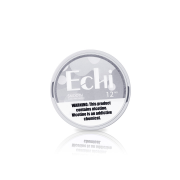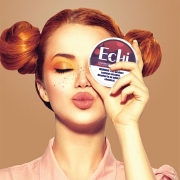A Corporate Buyer’s Guide to Skoal and Bulk Nicotine Product Procurement
Navigating the nicotine product market—especially when considering large-volume purchases—requires a clear understanding of product variety, supplier channels, and cost components. This guide uses Skoal, one of the most established smokeless tobacco brands, as a focal point to walk corporate buyers through a structured, informed procurement approach.
Understanding Skoal and Its Product Range
Skoal is a leading name in the smokeless tobacco category, produced by U.S. Smokeless Tobacco Company, a division of Altria Group. Known for its consistent quality, Skoal offers an array of product formats that appeal to diverse consumer preferences. These include:
-
Cuts: Long cut, fine cut, and pouch formats for varied use experiences
-
Flavors: Classic, mint, wintergreen, berry, and more
-
Strengths: Different nicotine concentrations tailored to user expectations
Familiarity with the full Skoal lineup is essential for distributors, retailers, or OEM clients evaluating which SKUs best suit their target markets.
How to Purchase Nicotine Products in Bulk
Bulk procurement of nicotine products requires careful planning and supplier validation. Here are key steps to consider:
-
Identify Verified Suppliers
Look for manufacturers with transparent business practices, regulatory compliance, and a proven track record in nicotine product manufacturing. Prioritize those with ISO, FDA, or GMP certifications. -
Evaluate Minimum Order Quantities (MOQs)
Before engaging in high-volume orders, confirm the supplier’s MOQ and whether trial orders or low-risk test batches are available. -
Assess Quality and Support
Ensure the supplier can support white label or OEM needs, offer timely communication, and provide reference clients if needed.
You may begin your supplier search through established platforms such as:
Procurement Channels: Comparing China and the U.S.
China
China remains a dominant sourcing hub, particularly for nicotine pouches, e-liquids, and custom packaging components. Many manufacturers offer flexible MOQs, competitive pricing, and OEM/white label services. Platforms such as Alibaba provide convenient access, though additional diligence is required for compliance and logistics.
United States
In contrast, the U.S. market operates with tighter FDA oversight and higher average production costs. However, local sourcing offers benefits in regulatory alignment, shipping speed, and consistent product standards. Supplier relationships here are often formed via trade shows, distributor networks, and direct outreach.
Buyers may select one region over another—or combine both—to balance cost efficiency and regulatory security.
Cost Composition: Breaking Down the Investment
To optimize margins, it’s important to understand how product cost is structured:
-
Equipment: For businesses considering in-house production or custom branding, machinery costs (e.g., pouch filling, sealing units) may apply.
-
Raw Materials: Core materials include tobacco leaf or nicotine extract, flavoring agents, pouch fabric or canisters, and stabilizers. Quality and source impact both price and final product quality.
-
Processing: Labor, compliance testing, packaging, and logistics are critical components—especially for products requiring labeling in multiple languages or regulated by country-specific standards.
Careful supplier negotiation and strategic forecasting can help manage these costs effectively.
White Label vs. OEM: Choosing the Right Model
White Label
White label options allow businesses to rebrand existing formulas and packaging with minimal lead time. This is ideal for:
-
Quick market entry
-
Retailers with established distribution but limited product development capacity
-
Budget-conscious buyers testing new product segments
OEM
OEM offers complete customization—from formula design and pouch size to packaging, labeling, and regulatory adaptation. OEM is suited to:
-
Premium or niche brands
-
Companies seeking product differentiation
-
Markets with strict labeling or formulation requirements
Recommendation:
White label is typically faster and more affordable, while OEM provides greater brand control and long-term product equity. Match your strategy to your market and brand goals.
Ordering Process: From First Contact to Long-Term Partnership
To ensure a smooth procurement journey:
-
Initiate Contact
Reach out to your shortlisted supplier(s) to discuss available products, MOQs, pricing structure, lead time, and customization options. -
Request Samples
Assess product performance in real-world conditions, including flavor strength, texture, and consumer appeal. Sampling also helps verify production consistency. -
Negotiate Terms
Clarify all business terms—unit pricing, delivery timelines, quality guarantees, payment milestones, and after-sales support. -
Confirm and Submit Order
Finalize documentation, secure payment arrangements, and confirm production timelines. Maintain clear communication to avoid delays. -
Build a Long-Term Relationship
Trusted suppliers become long-term partners. Consider establishing standing orders, seasonal promotions, or co-development of new SKUs to stay ahead of market trends.
Conclusion
Sourcing Skoal or other nicotine products in bulk doesn’t have to be complex—what’s essential is a clear understanding of product types, supplier ecosystems, cost drivers, and engagement models. Whether you lean toward white-label reselling or full-scale OEM production, success lies in selecting the right partners and structuring the purchase process with care.
By applying the principles in this guide, corporate buyers can navigate procurement confidently and scale their nicotine business operations with clarity and precision.








Leave a Reply
Want to join the discussion?Feel free to contribute!